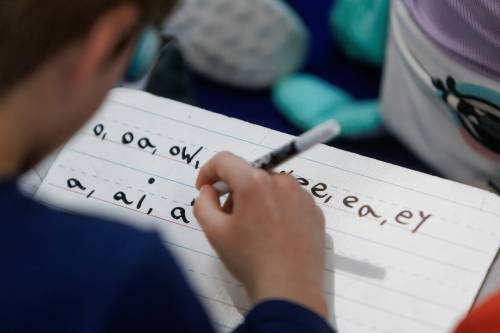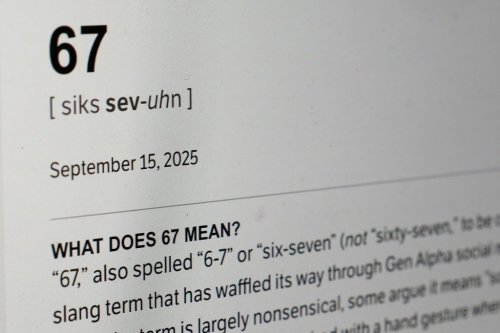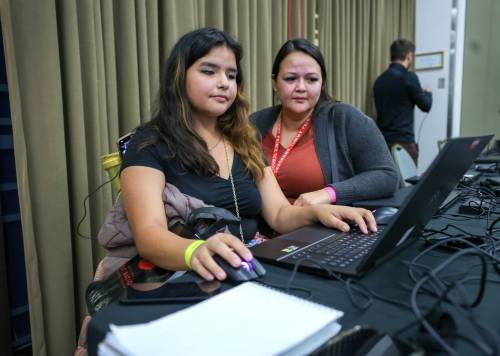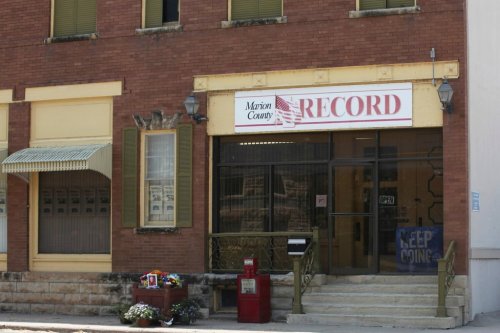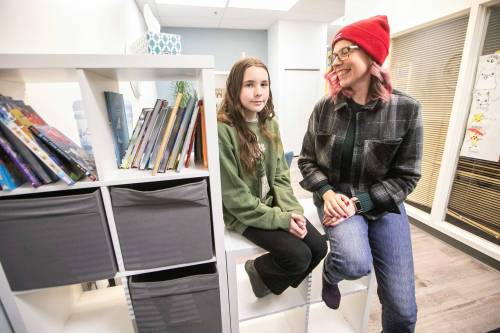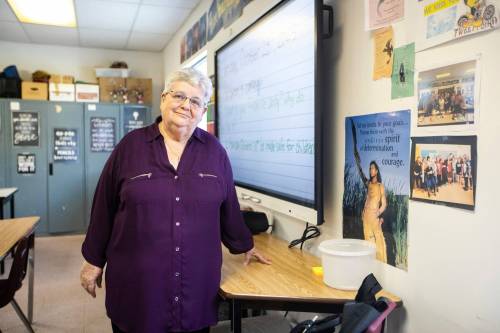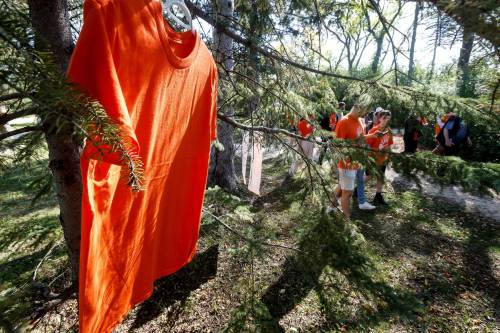English Language Arts
Please review each article prior to use: grade-level applicability and curricular alignment might not be obvious from the headline alone.
Is it just me? Or is swearing on the rise, on television, in print, in our daily lives?
Toronto Blue Jays manager, John Schneider, let loose a few F-bombs during the Jays’ recent playoff run. Former Blue Bomber star Jermarcus Hardrick, in town to play for Saskatchewan in the Grey Cup, revealed the meaning of the tattoo on his forearm from his Grey Cup wins in Winnipeg.
The tattoo features the Grey Cup, the Bomber logo and the letters, FIFO, which stands for “Fit in or F-off.”
I expect few are surprised that the sports locker room remains fertile ground for swearing. What is surprising, at least to me, is the steady rise in so-called “colourful language” in public settings, including mainstream media, and of course social media platforms.
Indigenous anthology an inspiring resource
4 minute read Thursday, Nov. 20, 2025You Were Made for This World: Celebrated Indigenous Voices Speak to Young People (Tundra, 120 pages, hardcover, $29), edited by Stephanie Sinclair and Sara Sinclair, is a thoughtful book that will speak to the reality of many children ages nine and up, especially those of Indigenous heritage.
Forty contributors, including Tanya Tagaq, Wab Kinew, Cherie Dimaline and other notable Indigenous artists, professionals and activists, remind children how Indigenous lives were devalued, but that their survival and accomplishments give this generation hope and opportunity.
This collection of stories is a worthy purchase as a gift and an important book to have in a school library as an example of how truth and reconciliation are being put into practice.
● ● ●
Probe flags troubles in literacy education
5 minute read Preview Monday, Nov. 3, 2025Winnipeg students develop critical aptitude essential for navigating media landscape
14 minute read Preview Friday, Oct. 31, 2025Dictionary.com’s word of the year is ‘6-7.’ But is it even a word and what does it mean?
3 minute read Preview Friday, Oct. 31, 2025When the internet first arrived in the mid-1990s, it screeched. Literally.
It screamed its way into our homes through the telephone lines, a metallic cry that sounded like the future forcing its way through. We waited through the static, convinced that life was about to get easier. People said it would save us time, let us work from home and give us more hours with our families.
No one mentioned that it would also move into our bedrooms, our pockets and our dreams. No one could have imagined that it would change how we fight, how we march, how we plead for justice. That the fight for justice itself would become a digital labyrinth where truth moves slowly and attention moves fast.
Back then, when a heroine from a popular early-2000s television show was dumped with nothing but a handwritten note, it became a cultural tragedy. There was nothing noble about writing your cowardice on a Post-it. A few years later, a company fired hundreds by email and it made national news. Today, we “quietly quit” through apps without blinking, edit our grief into reels, add the music the app suggests and call it closure.
Most refused to listen then, more understand now
6 minute read Preview Monday, Sep. 29, 2025Hard pass. Cold brew. Dad bod. Merriam-Webster adds over 5,000 words to ‘Collegiate’ dictionary
6 minute read Preview Wednesday, Oct. 15, 2025In cold blood: the death of American media
5 minute read Monday, Sep. 22, 2025Independent mainstream legacy media in the United States is dead. The funeral just hasn’t been held yet.
‘Love Island’ revives conversation about racial bias and misogynoir in dating
6 minute read Preview Friday, Oct. 10, 2025Esports competitions motivating force for First Nations students, educators say
4 minute read Preview Monday, Oct. 30, 2023Raising up books as social justice tools
5 minute read Preview Saturday, Feb. 18, 2023Map-based history of Canada a marvel
3 minute read Preview Saturday, Oct. 28, 2017The inconvenient truth: Thomas King’s admission he isn’t Cherokee hits hard
5 minute read Preview Monday, Nov. 24, 2025A Kansas county agrees to pay $3 million and apologize over a raid on a small-town newspaper
6 minute read Preview Wednesday, Nov. 12, 2025Elementary students share struggles with reading after report reveals education system failing
12 minute read Preview Sunday, Nov. 9, 2025Amid bail-reform debate, some argue court orders must suit low literacy levels
8 minute read Preview Friday, Nov. 7, 2025It’s never too brisk to bike — once you get in gear with winter
8 minute read Preview Saturday, Nov. 1, 2025Coming of age in the era of ‘fake news’
5 minute read Preview Friday, Oct. 31, 2025Being human — by choice
4 minute read Wednesday, Oct. 22, 2025I have found myself thinking about what draws me to a children’s television host who spent decades talking about how we live together in neighbourhoods.
Fred Rogers had this gentle way of speaking to children about the everyday challenges of being human: how to handle anger, disappointment, fear, and joy. But the more I consider his approach, the more I realize he wasn’t really teaching children how to behave, how to feel about themselves, how to understand the world around them. He was making something much more fundamental feel possible and worthwhile: he was making human decency aspirational.
Mr. Rogers knew that how we treat each other matters, not because it’s polite or proper, but because it’s how we create the kind of world we actually want to live in. His genius wasn’t in the specific lessons he taught, but in how he made kindness, patience, honesty, and gentleness feel like the most essential ways to be human.
I keep wondering if that’s what we’re missing sometimes. Not more rules about how to behave, but a sense that kindness and integrity are worth striving for.

